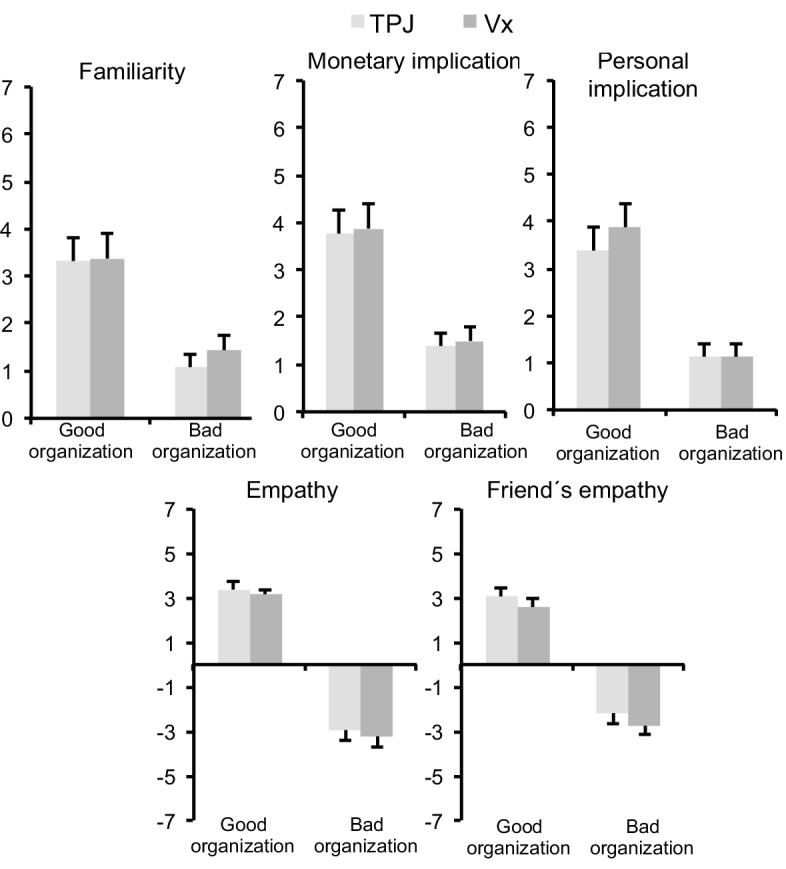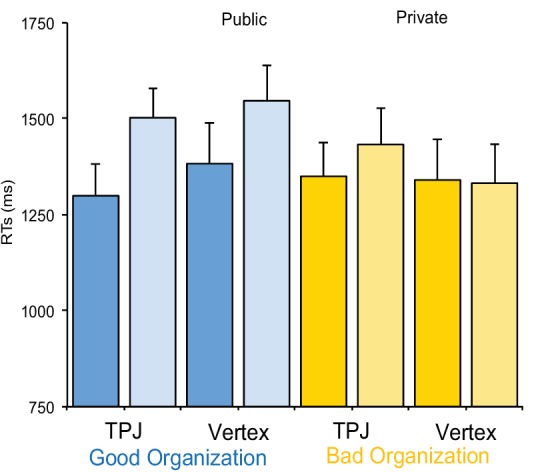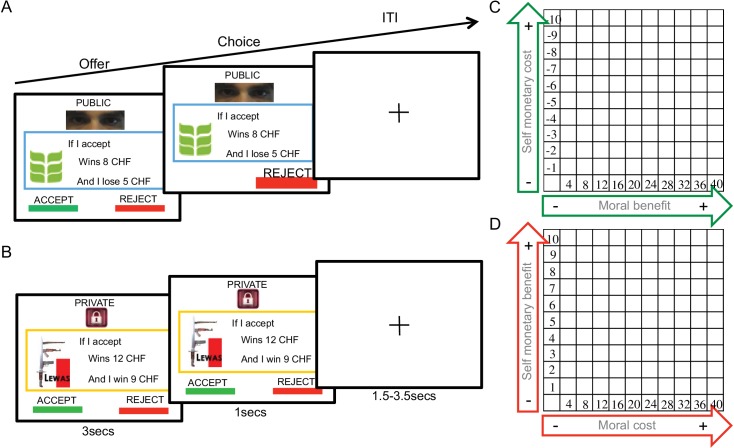Figure 1. Donation task.
(A) Presentation of moral context and public trial conditions, with green leaf logo from ‘Bread for all’ organization; (B) presentation of immoral context and private trial conditions, showing the ‘Lewas’ organization logo. (C) It shows the trial distribution of the moral context and D the trial distribution of the immoral context.
Figure 1—figure supplement 1. Subjects value rating of organization types used in the donation task.

Figure 1—figure supplement 2. Audience effects are not changed by TMS.

Figure 1—figure supplement 3. Reaction times for the different conditions show no significant differences [all F´s > 1], suggesting that TMS did not lead to task disengagement or distraction.


